Can Holness Clean Up Riverton and Still Secure the Future of Its People?
Jamaica Live News Report– | Aug 14, 2025
For over 60 years, the sprawling Riverton City landfill has been more than just Kingston’s waste site — it has been the lifeline for hundreds of families. Generations have survived by sorting, salvaging, and selling what others throw away. It’s dangerous, it’s dirty, but for many, it’s all they’ve known.
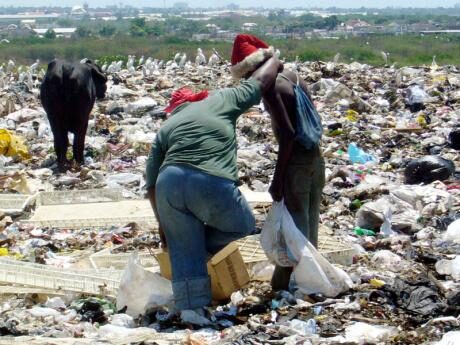
Now, Prime Minister Andrew Holness has signalled that the days of the infamous Riverton dump are numbered. His plan: shut it down in the name of environmental progress, cleaner air, and public health. The vision sounds noble — no more smoke-choked skies, no more toxic fires, no more mountains of rotting waste. But in Riverton, a pressing question hangs heavy in the air: What happens to the people who live off the dump?

On Sunday, Prime Minister Andrew Holness reaffirmed a plan first announced in 2022: the closure of the Riverton City dump. In its place, the government will build a modern sanitary landfill and a waste-to-energy plant — a project Holness says will fuel environmental progress and economic growth in St Andrew South.
“We have already identified where that will be and we have done the work on that, and we will decommission Riverton City as a dump as it is,” Holness said.
“We will work with the communities that are in and around Riverton City, and eventually Riverton City will become the next frontier for economic development in Kingston.”
The plan promises cleaner air, less pollution, and a bold new vision for the land now choked with decades of waste. But for the people who depend on the dump, it’s a future filled with uncertainty — and fear.
Holness faces a delicate balancing act — a classic clash between development and livelihoods. Shut the dump abruptly, and you risk cutting off hundreds of residents from the only source of income they’ve ever known. Delay closure too long, and Jamaica continues to pay the price in pollution, health crises, and international embarrassment.
“The Dump Make Mi Eat and Drink Every Day”
For Ian Baker, a waste picker at Riverton, the dump is more than just a workplace — it’s his lifeline.

“Mi go prison fi 10 years fi robbery and mi spend mi time because mi own di crime, but when mi come out the government never offer mi any employment,” Baker told The Jamaica Star.
He says the dump gave him something prison never did: economic independence.
“The dump make mi eat and drink every day. When dem take di dump now, what are you going to do … come back for me and put mi back a prison?”
Michael Carter, 47, a father of two, shares the same fears.
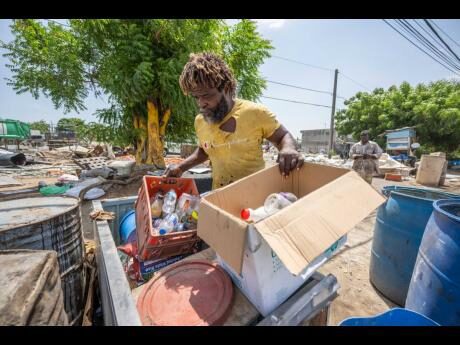
“A just the dump mi know about, and mi never do a next work inna mi life,” Carter said, his hands blackened from hours of sorting through waste.
“If yuh work hard, you can make $50,000 or more a week. Yesterday, mi sell enough plastic to buy shoes for my children who go high school. If dem stop my food, it a guh hurt mi really bad, because a it mi send mi pickney dem go school out of.”
From as early as 5:30 a.m., Carter joins dozens of others in the hunt for scrap metal, recyclable plastic, or anything that can be resold. The competition is fierce — the earlier you arrive, the better your chances.
“Whenever dem close di dump, dem a go mash we up,” he said.
Without a comprehensive transition plan, critics warn, the closure could push hundreds into deeper poverty or back into criminal activity — undermining the very social stability development projects are meant to strengthen.
Problems at the Dump
The Riverton dump produces a constant, overpowering stench. It is difficult to understand how anyone survives living so close to such toxicity. Fires at the dump remain a mystery — some blame spontaneous combustion from heat and volatile chemicals, but many know tyres and plastics are deliberately burned to extract metal for the scrap trade.
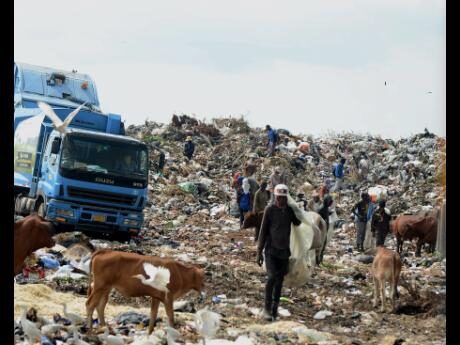
Burning tyres release litres of petroleum and oil, producing toxic gases and particulates. These pollutants enter our lungs, seep into soil and water, and contaminate the food we eat. Some remain in body fat, others are passed through breast milk. Many cause cancer and some lead to birth defects.
Harmful substances include chlorine, styrene, benzene, arsenic, lead, cadmium, mercury, and more than 20 heavy metals like chromium, zinc, and copper. Dioxin — one of the most toxic pollutants known — travels long distances, never breaks down, and accumulates in the body. These toxins trigger allergies, eye irritation, respiratory illnesses such as asthma and sinusitis, and are especially dangerous to children and the elderly.
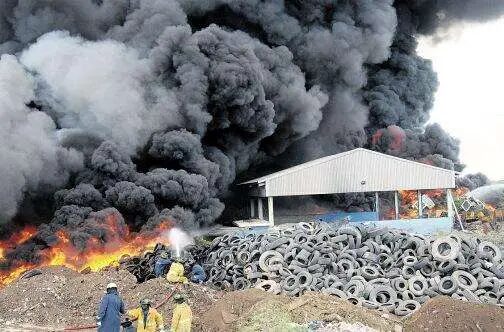
Health Risks
Between 1996 and 2015, the dump recorded 415 fires. In 2014 alone, toxic emissions exceeded World Health Organization limits, according to Dr. Alverston Bailey, clinical toxicologist and UTech associate professor. Sulphur dioxide levels ranged from 50 to over 150 µg/m³, nitrogen dioxide from 50 to 100 µg/m³, and PM10 particulates reached 81 µg/m³ — dangerously high readings for nearby communities.
International Attention and Embarrassment
In 2016, The World Bank was to conduct a study at the Riverton Dump to determine whether it makes sense to seek to produce electricity from the garbage there. Riverton Dump was said to be ideal for waste-to-energy investment in Jamaica. Prime Minister Andrew Holness said at the time that government has received more than 30 expressions of interest to either bid on the waste-to-energy program or to collect solid waste, or both.
“Ultimately, this project will ensure that solid waste is not the end of the consumption cycle but rather becomes an input into another cycle of production, which gives solid waste some economic value,” Holness said.
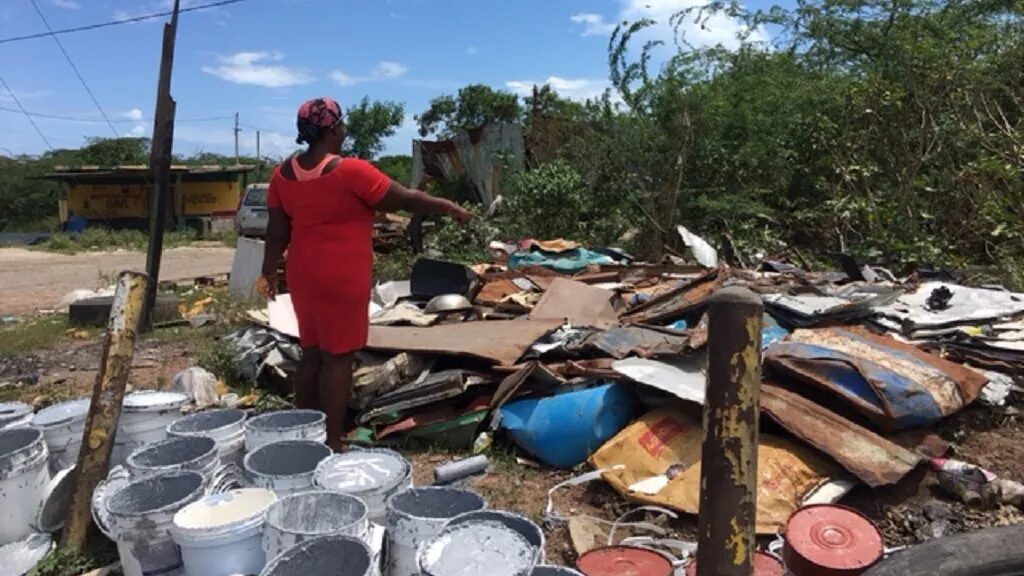
The Crossroads
Riverton stands at a turning point. For Jamaica, the closure could mark a major step toward environmental reform and modern waste management. For residents, it could either be the gateway to safer, better-paying jobs — or the loss of the only income they’ve ever known.
Holness’s challenge now is not just to close a dump. It’s to prove that progress doesn’t have to come at the expense of the people who have lived, worked, and survived in its shadow for generations.
Finding Common Ground
Experts say the solution isn’t to simply lock the gates — it’s to build a bridge. A phased closure, combined with the creation of formal recycling jobs, could transform Riverton from a public health hazard into a modern waste-to-energy and recycling hub. Residents who once scavenged in unsafe conditions could be trained, employed, and paid to sort recyclables and manage waste in a safer, regulated environment.
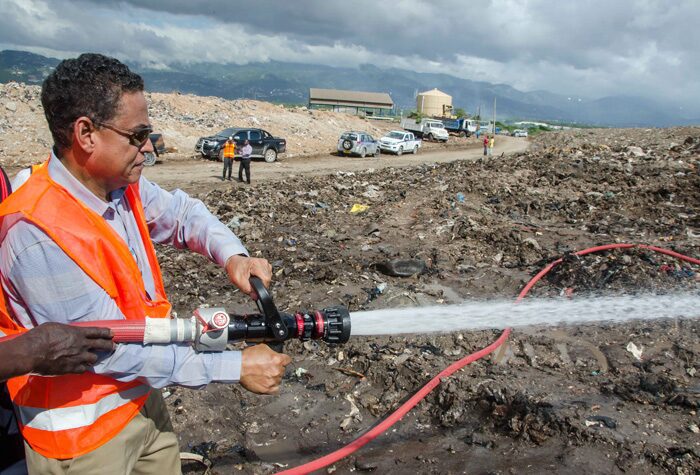
Retraining programmes in construction, landscaping, sanitation, and renewable energy could also open up new career paths. But without government-backed income support during the transition, many fear they will be left with nothing in the gap between “old Riverton” and “new Riverton.”
Holness would have to balance public health, environmental goals, and human survival needs. That means closing the dump can’t be a simple “lock the gates” decision — it has to be a transition plan that protects both the environment and the livelihoods of Riverton residents.
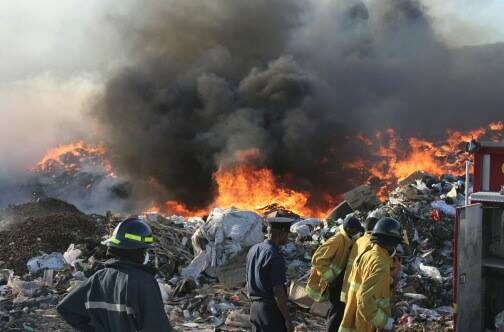
Here’s how he could reconcile the two:
1. Phased Closure Instead of Sudden Shutdown
- Gradually reduce waste dumping while introducing alternative waste processing (recycling, composting, waste-to-energy plants).
- Give residents time to adapt instead of abruptly cutting off their only source of income.
2. Formal Waste Management Jobs
- Many Riverton residents already work as informal waste pickers. Holness could integrate them into an official recycling and sorting workforce with training, uniforms, and wages.
- Public-private partnerships could set up recycling hubs near the site so workers can continue earning but under safer, regulated conditions.
3. Retraining & Employment Diversification
- Government could offer skills training programmes — construction, landscaping, sanitation services, renewable energy — so workers can transition to new jobs.
- Prioritise Riverton residents for jobs in the redevelopment project of the dump site.
4. Community-Led Recycling Cooperatives
- Fund cooperatives owned by residents to handle collection, sorting, and resale of recyclables.
- Provide microloans and business training to help them become independent entrepreneurs in waste recovery and other sectors.
5. Social Support During Transition
- Offer temporary income support (cash transfers, food programmes) during the closure phase.
- Improve access to housing, healthcare, and education so that people aren’t trapped in a cycle of generational poverty linked to the dump.
A Chance for Real Change
Holness has an opportunity to show that environmental progress doesn’t have to mean social displacement. The Riverton closure could become a flagship example of inclusive development — where the community that bore the brunt of the country’s waste crisis becomes the first to benefit from its solution.
But here’s the political reality: if the Prime Minister wants buy-in, his message must be clear — “We’re not just shutting down Riverton; we’re building something better for you.” Anything less, and the move risks being seen as another case of progress for the few, at the expense of the many.
